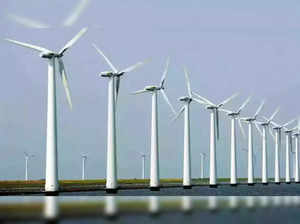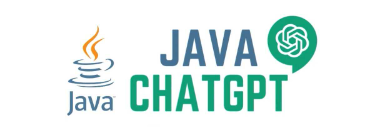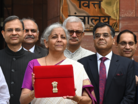 Agencies
AgenciesBudget with ET

THIRST TO GROW FASTER
When Tulsi Tanti, a textile manufacturer from Gujarat, set up Sulon in 1995 for a cheap and continuous power supply for his unit, he dreamt of making it the world leader in renewable energy. The company grew steadily, garnered a 50% domestic market share, made strides internationally and went public by raising `1,500 crore in 2005. The thirst to grow faster and bigger-led Suzlon to make two expensive debtfunded acquisitions: Belgian gearbox maker Hansen Transmissions in 2006 and Germany’s Repower in 2007. In 2008, the global recession caused the wind energy market to crash across the globe. To make matters worse, a few blades of Suzlon’s wind turbines cracked in wind farms in the US. Even as the company rolled out a repair programme that sucked out cash, its market capitalisation fell from `68,000 crore to `8,000 crore in 2010. As business suffered, Suzlon began defaulting on loans and payments to creditors. In 2015, the total debt stood at `17,800 crore. Generous creditors, however, restructured Suzlon’s debt five times. In 2015, on a mutual agreement, Sun Pharma promoter Dilip Shanghvi came in as a white knight for the company, infusing `1,800 crore by purchasing a 23% stake. Last September this agreement was terminated citing Suzlon's turnaround. Sanghvi remains an investor. Even as Suzlon was finding its feet, in 2017 came another blow. Wind energy sector moved away from feed-in tariffs to competitive bidding in India. “If we were to look back and see, troubles came from the external environment…We were growing and had already reached 5 gigawatts annually, but the regulatory change put a brake on it,” said Suzlon vice-chairman Girish Tanti, the founder’s brother. The regulatory changes impacted demand. Many wind energy companies shut shop. Suzlon, though, scraped through.
SUZLON 2.0
In 2022, Suzlon decided to pare debt and planned on a rights issue to raise `1,200 crore. Before the rights issue was launched, Tulsi Tanti passed away after suffering a heart attack. Suzlon raised `2,000 crore the following year by selling shares publicly to institutional investors.
In December, it declared itself net debt-free and secured credit lines for working capital from state-run REC. The company is keeping a close watch on fixed costs, chief financial officer Himanshu Mody said. “We now have a central team that manages budgets well in advance and controls the expenses.”
Analysts have taken note of the improvements. Morgan Stanley in a June 2 report said Suzlon has strong product and execution capabilities, a well-diversified manufacturing base, reasonable supply chain access, and a stronger balance sheet to execute its order book. “We believe Suzlon is strongly positioned for the upcycle,” it said.
Suzlon has three key business segments: manufacturing wind turbine generators (WTGs), operations and maintenance support, and forging and foundry components. It has a 30% wind energy market share in India. With an order book of 3.3 gigawatts, the company says it has 3.15 GW of manufacturing capacity and can ramp it up to 4.5 GW in phases. “Our service business always has sustainable growth. Because every single turbine we supply, we only supply to those who are willing to enter into service contracts,” said Chalasani. For the foundry and forging business, the company plans to expand in the non-wind segment as well as tap the export market. “We are significantly looking at expanding into non-wind segments like railways and defence among others,” said Chalasani. And it has decided not to repeat the mistakes of the past. “We have tightened financial discipline and governance within the organisation,” said Tanti. “We are careful in terms of balancing out the geographic risks and product risks and various regulatory risks.”
(Catch all the Business News, Breaking News, Budget 2024 Events and Latest News Updates on The Economic Times.)
Subscribe to The Economic Times Prime and read the ET ePaper online.
Read More News on
(Catch all the Business News, Breaking News, Budget 2024 Events and Latest News Updates on The Economic Times.)
Subscribe to The Economic Times Prime and read the ET ePaper online.









































 Get Unlimited Access to The Economic Times
Get Unlimited Access to The Economic Times
